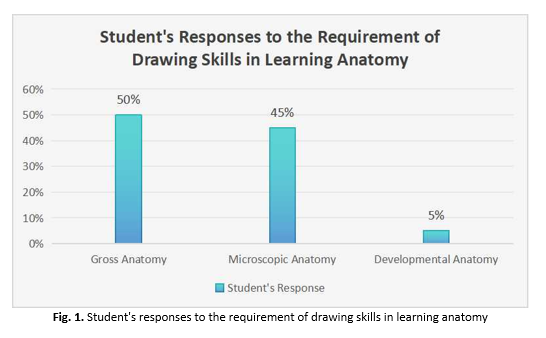Students’ Responses to Drawing Skills in Learning Veterinary Anatomy: Drawing Skills in Learning Anatomy
DOI:
https://doi.org/10.37934/frle.39.1.4856Keywords:
Drawing skill, learning anatomy, students’ responsesAbstract
Drawing skills are the most valuable and widely used method for expressing biological science. This study was planned to evaluate the student's responses to drawing skills in learning veterinary anatomy. 115 first-year veterinary students were included in this descriptive study. They were requested to answer a previously prepared questionnaire regarding drawing skills in learning veterinary anatomy. Their responses were analyzed and presented in graphs with percentages. Students' responses to drawing skills in learning gross anatomy, microscopic anatomy, and developmental anatomy were 50%, 45%, and 5%, respectively. They need this skill as it helps in knowledge retention (37%) and explains the topic in detail easily (27%). Student can also apply their drawing skill in theory examinations (60%) and practical notebooks (25%). Sketch graphics (36%) and tutor instruction (34%) helped them learn drawing skills more efficiently. Almost 65% of students strongly preferred to receive instruction and notes on drawing from the tutor for future studies. Again, they also preferred (75%) to get special training in learning drawing skills. Drawing skills are essential in learning veterinary anatomy based on student responses as they help retain knowledge and explain complex topics easily. Using sketch graphics and tutors' instruction might help veterinary student improve their drawing skills.














